Meet Our Board Members
Our board members bring a wealth of experiences and expertise to the Partnership, united by their passion for our mission. It’s our pleasure to introduce them to you.
Harold Chase, Chairman
Director of Government Affairs
NSF
Connect: LinkedIn

Dan Fone
Vice President, Food Safety, Quality & Sanitation
Dollar Tree
Connect: LinkedIn

H. Lester Schonberger, Ph.D.
Associate Extension Specialist
Virginia Tech/Virginia Cooperative Extension
Connect: LinkedIn

Sharon Mayl, Board Advisor
Partner
DLA Piper
Connect: LinkedIn

Jane DeMarchi
President
North American Millers’ Association
Connect: LinkedIn
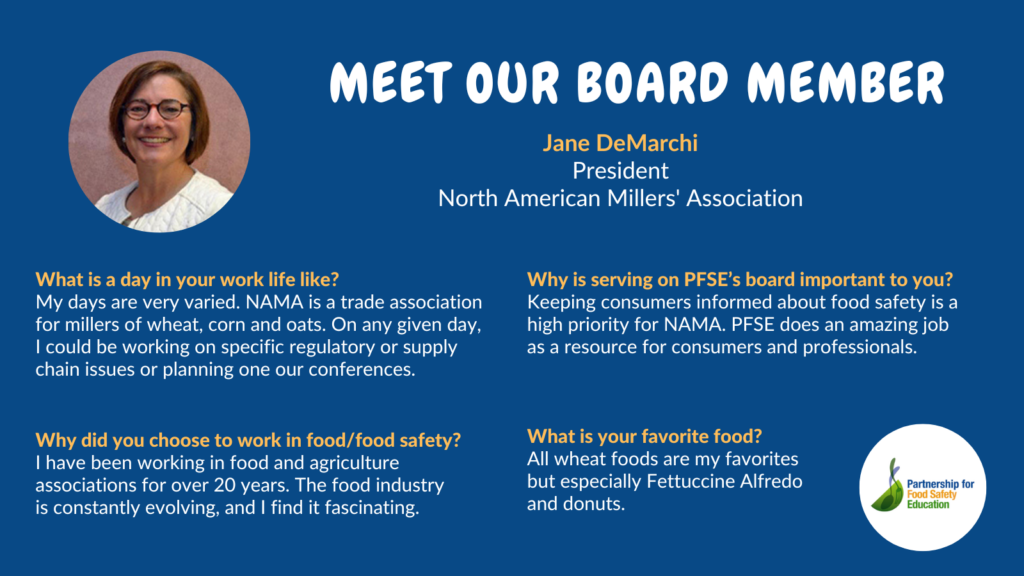
Stefanie Evans, Ph.D.
Vice President, Quality & Food Safety Sourcing & Design
Danone North America
Connect: LinkedIn
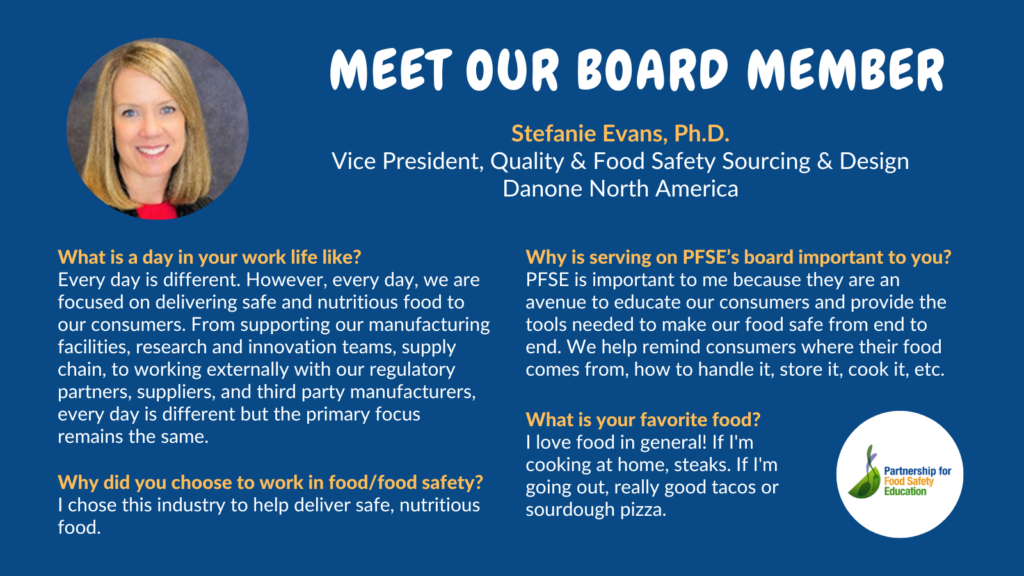
Spring Forward with Food Safety
Many of this season’s celebrations involve perishable foods like eggs, beef, ham and lamb. These foods need to be handled properly at home to prevent food poisoning.
Safe Egg Handling
Eggs are a big part of many spring celebrations and activities. Kids love to decorate and dye them, hide them, and cook them with their families in festive foods.
Follow these eggs-pert food safety tips with kids and families to keep them safe this spring season:
- Wash hands with soap and water before preparing food and after handling raw eggs.
- Prevent cross-contamination. Wash cutting boards, counters, utensils, and serving plates after touching raw eggs, meat, poultry, and seafood.
- Remember the two-hour rule. Don’t leave eggs out at room temperature for more than two hours.
- Cook eggs and dishes containing eggs until the internal temperature reaches 160° F on a food thermometer.
- For egg hunts and other activities, only use eggs that have been refrigerated. Discard eggs that are cracked, dirty, or have been out at room temperature for more than 2 hours.
Get more safe egg handling advice to keep you and your young ones healthy this season.
Handle & Cook Meats Safely
The meat is the centerpiece of any holiday meal. Make sure yours is a showstopper by handling and cooking it safely:
- Wash hands with soap and water before preparing food and after handling raw meat and poultry.
- Cook ham until the internal temperature of 145 °F on a food thermometer with a three-minute “rest time” after removal from the heat source.
- Bake beef brisket, fat side up in a baking dish, in an oven set no lower than 325 °F. The brisket is safe to eat when it reaches an internal temperature of 145 °F on a food thermometer with a three-minute “rest time” after removal from the heat source.
- Cook all raw lamb steaks, chops, and roasts to a minimum internal temperature of 145 °F on a food thermometer with a three-minute “rest time” after removal from the heat source.
Spring Clean Your Way to a Safer Kitchen
It’s important to know the difference between cleaning and sanitizing. They aren’t the same thing. Both are important to help prevent the spread of harmful germs.
- Cleaning removes germs, dirt, and impurities from surfaces or objects. Cleaning works by using soap (or detergent) and water to physically remove germs from surfaces. This process does not necessarily kill germs, but by removing them, it lowers their numbers and the risk of spreading infection.
- Sanitizing lowers the number of germs on surfaces or objects. This process works by disinfecting surfaces or objects using a diluted liquid chlorine bleach solution (combine 1 tablespoon liquid chlorine bleach with 1 gallon of water in a clean bucket).
Learn more about when to clean and when to sanitize at home.
Follow these food safety tips to help your family and friends have an egg-cellent spring celebration!
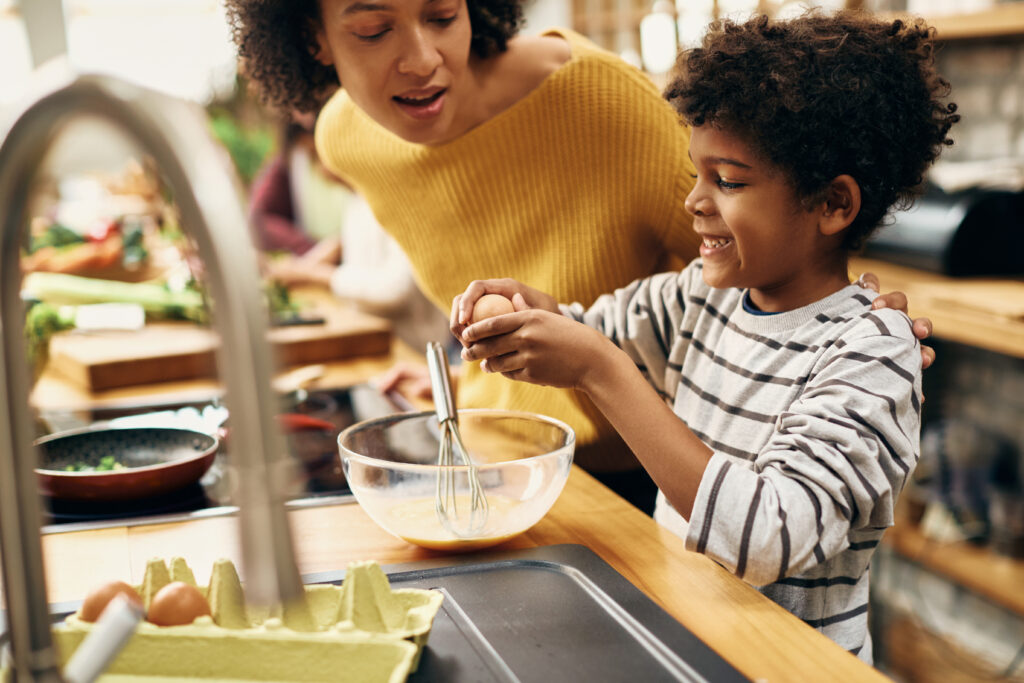

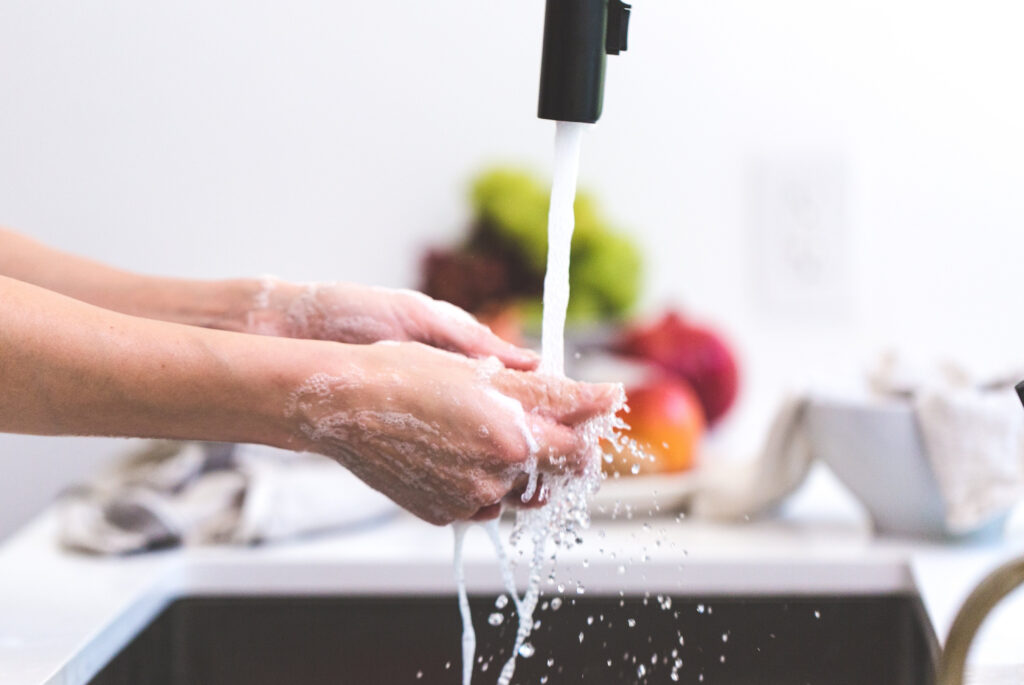
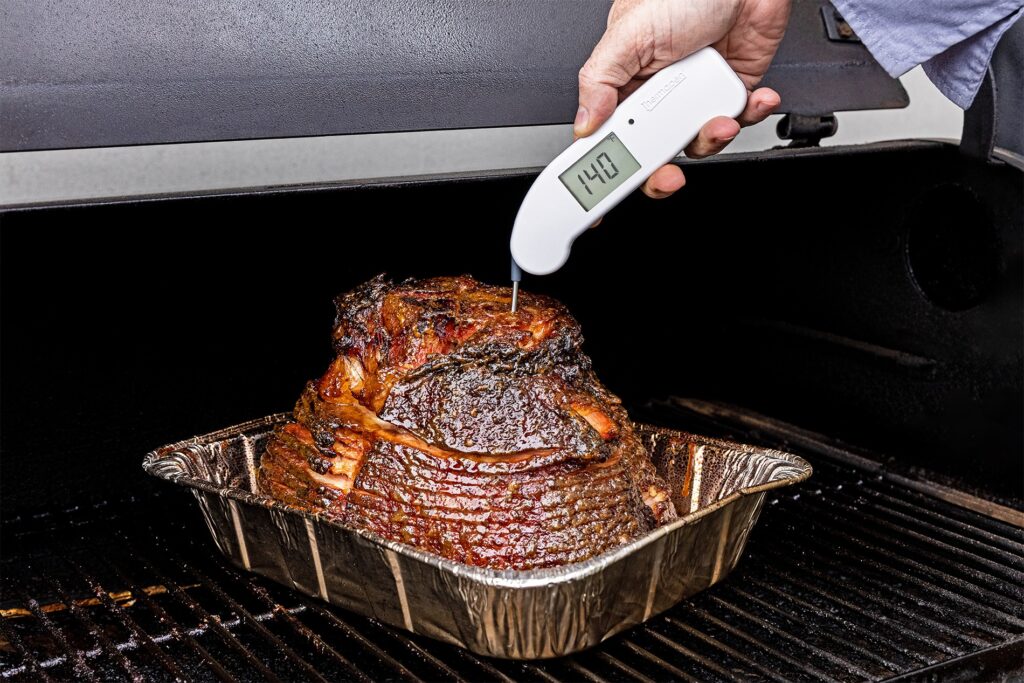
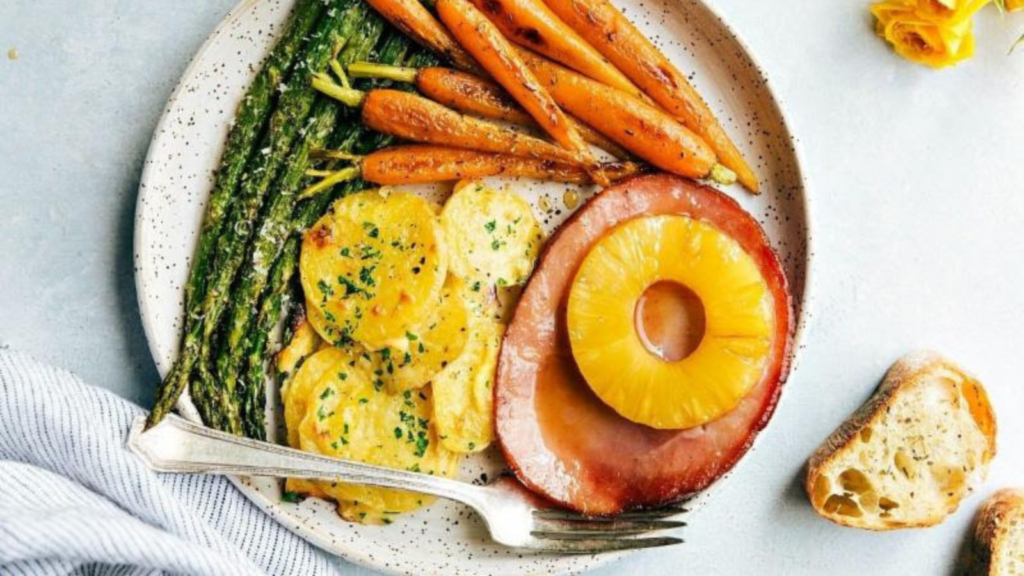
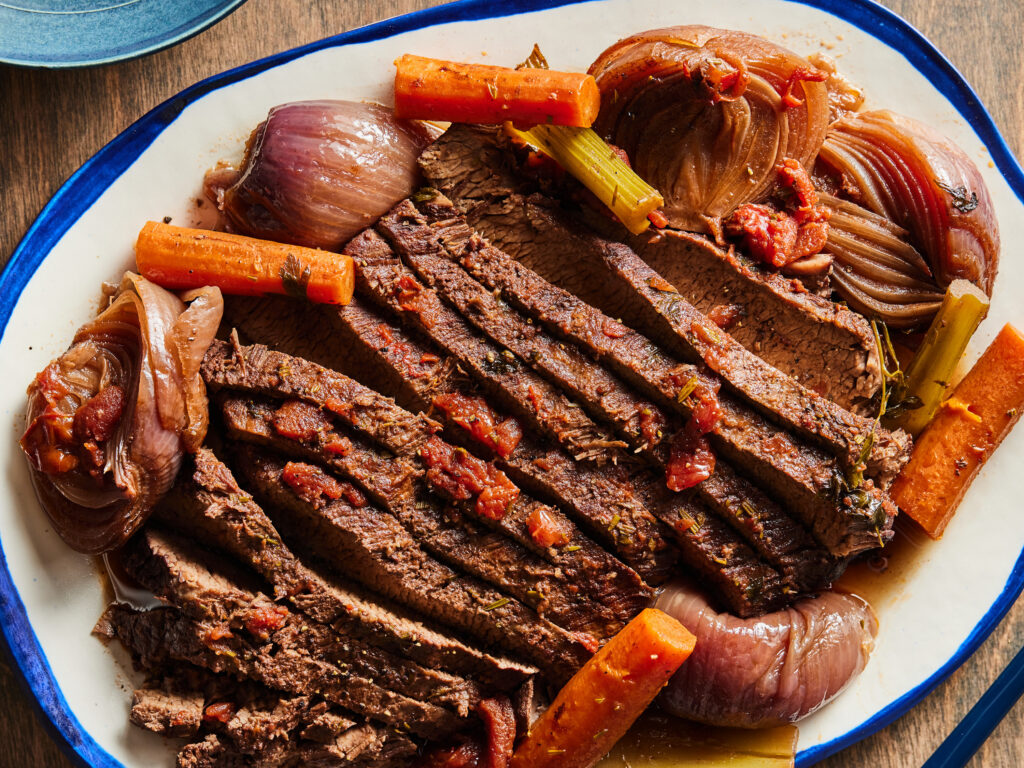
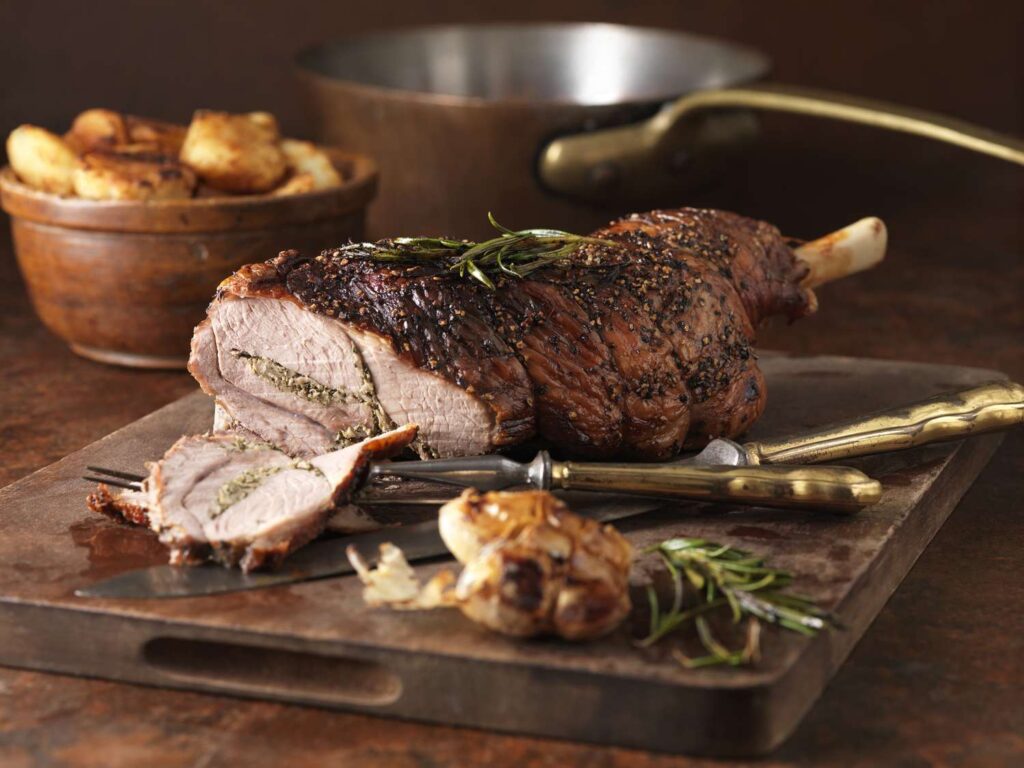
Hot Off the Grill: Home Grilling Safety Tips
Families are doing more grilling this year. Nielsen reported that fresh meat alternative sales increased 255% in the last week of March (compared to the same week in 2019), fully outpacing the growth of meat sales, which increased 53% over the same period.
Fight BAC! is here to help you out with a few essential tips on handling meat safely, and how grilling safely at home can keep you and your family healthy.
Clean hands & surfaces
Washing your hands and surfaces the correct way will help reduce the risk of harmful germs:
- Wash your hands with warm water and soap for at least 20 seconds before and after handling food.
- Wash your cutting boards, dishes, utensils, and counter tops with hot soapy water after preparing each food item and before you go on to the next food.
- Do not rinse raw meat or poultry before cooking it. This is not a safety step, and it could spread dangerous germs around your kitchen.
Thawing meat
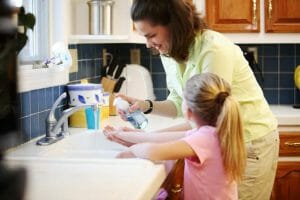 You may be buying more meats in bulk right now and freezing for later use. Make sure to thaw meats properly:
You may be buying more meats in bulk right now and freezing for later use. Make sure to thaw meats properly:
- Never let raw meat, poultry, eggs, cooked food or cut fresh fruits or vegetables sit at room temperature more than two hours before putting them in the refrigerator or freezer (one hour when the temperature is above 90°F).
- Never thaw food at room temperature. Food must be kept at a safe temperature during thawing.
- There are three safe ways to defrost food: in the refrigerator, in cold water, and in the microwave. Food thawed in cold water or in the microwave should be cooked immediately
Marinades
Everyone loves a good marinade! Make sure to safely marinate and store your meat:
- Always marinate foods in the refrigerator, not on the counter or outdoors.
- Don’t use sauce that was used to marinate raw meat or poultry on cooked food.
- Reserve a portion of the unused marinade to use as a sauce.
Grilling temps
 When it’s time to grill the food, cook it to a safe internal temperature for safety and quality. Use a food thermometer to be sure!
When it’s time to grill the food, cook it to a safe internal temperature for safety and quality. Use a food thermometer to be sure!
- Beef, pork, veal and lamb (roast, steaks and chops): 145 °F with a three-minute “rest time” after removal from the heat source
- Ground meats: 160 °F
- Poultry (whole, parts or ground): 165 °F
- Eggs and egg dishes: 160 °F, but cook eggs until both the yolk and the white are firm; scrambled eggs should not be runny
- Fin fish: 145 °F
- Shrimp, lobster and crabs: flesh pearly and opaque
- Clams, oysters and mussels: shells open during cooking
- Scallops: milky white, opaque and firm

Avoid cross-contamination
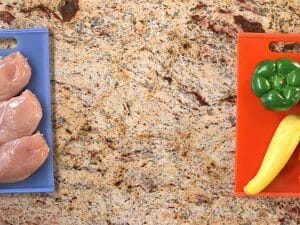 Cross-contamination is how harmful bacteria can be spread. Improper handling of raw meat, poultry or seafood can create an inviting environment for cross-contamination:
Cross-contamination is how harmful bacteria can be spread. Improper handling of raw meat, poultry or seafood can create an inviting environment for cross-contamination:
- Never place cooked food on a plate that previously held raw meat, poultry or seafood.
- Use one cutting board for fresh produce and a separate one for raw meat, poultry and seafood.
- Be sure to have plenty of clean utensils and platters on hand.
Leftovers
After the meal, remember to handle leftovers safely to prevent foodborne illness:
- Plan on enough storage space in the refrigerator and freezer. In the refrigerator, air needs to circulate to keep the temperature at 40 °F or below. Use an appliance thermometer in your refrigerator to monitor the temperature.
- Divide large amounts of leftovers into shallow containers for quicker cooling in the refrigerator.
- Leftovers stored in the refrigerator should be consumed within 3-4 days
- Reheat leftovers to 165 °F before eating.
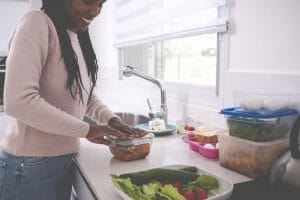 To help you Fight BAC!® (harmful bacteria) this grilling season, we’ve collected five grilling recipes with built-in food safety and hand hygiene steps.
To help you Fight BAC!® (harmful bacteria) this grilling season, we’ve collected five grilling recipes with built-in food safety and hand hygiene steps.
Check out food safety videos on grilling and safe food preparation on the Food Safety YouTube channel.
Have a happy and safe grilling season!
Shawnte Loeri is the Communications Associate with the Partnership for Food Safety Education. She can be reached at sloeri@fightbac.org.
Lisa’s Table Is All About Safe Dinners
Meet Lisa
Lisa Treiber is a dedicated BAC Fighter who is passionate about keeping her community safe. She is an Extension Agent at Michigan State University, and she regularly uses Fight BAC! resources in her curriculum.
Lisa values raising awareness around safe food handling practices. Throughout the semester she teaches courses that remind students how to stay healthy. She also shares The Story of Your Dinner resources — particularly around the holiday season. She has done this for many years and has noticed that her community responds positively to it.
Lisa’s Table Spreads Awareness for the Holidays
This past holiday season, Lisa dedicated a table to food safety in the atrium of the Midland County Building Department. She enlarged food safety tips from The Story of Your Dinner and made them into laminated tiles. The tiles were arranged to be easily read by anyone who passes through the building. Lisa is thankful for the clear messages on each tile like “Suds up for 20 seconds” and “Keep your refrigerator at 40 °F or below.”
Lisa went a step further and printed off recipes with food safety steps and left them on the table. She worked hard to emphasize the importance of food safety during the holiday season, and it was well received by her peers and community. She was pleasantly surprised to see over 50 recipes had been taken from the table by the diverse population that walks through the building.
Years of Community Engagement at the Table
This isn’t the first year Lisa has created a table display. A couple years ago, she increased community engagement by holding a drawing for those who stopped at the table. Over 75 people entered, and the winner received a fridge thermometer to ensure their fridge was at a food-safe temperature. The county health department sanitarian workers who approved the display said that it was “wonderful.”

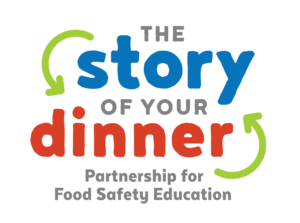

Lisa feels that with the number of those who have responded each year, she is getting her message across and doing her part in spreading awareness to her community. She appreciates that the resources from the Partnership for Food Safety Education are diverse and can be easily tweaked to be used throughout the entire year.
Lisa Treiber is an Extension Agent at Michigan State University. She can be reached at treiber@msu.edu.
You can make sure families have the safe food handling information that they need to reduce their risk of food poisoning with a personal contribution today. Click here to make a gift.
- 1
- 2
- 3
- …
- 14
- Next Page »
